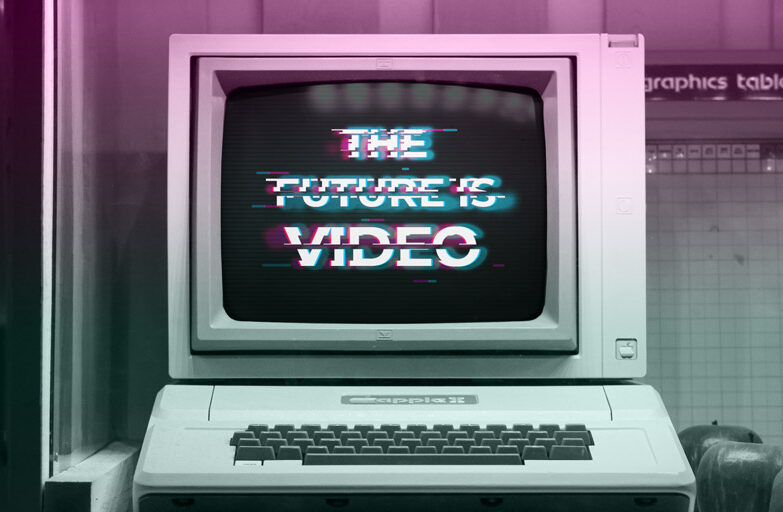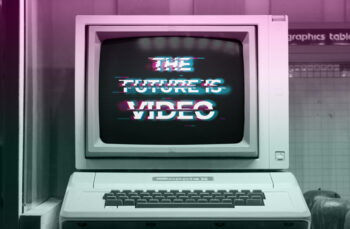
Your employees scroll through hours of video content daily. So why are you still trying to engage them with 2,000-word PDFs?
Picture this: Your CEO records a quarterly update. Option A: It becomes a dense, 8-page document that 12% of employees actually read. Option B: It becomes a dynamic 3-minute video that 87% of employees watch completely, share with colleagues, and actually remember three months later.
This isn’t hypothetical. This is the reality we’re seeing with our clients who’ve made the shift to video-first culture.
The Communication Crisis Hiding in Plain Sight
Here’s an uncomfortable truth: Your culture initiatives aren’t failing because your values are wrong. They’re failing because nobody’s paying attention to how you’re sharing them.
While you’re crafting perfectly worded policy updates and comprehensive strategy documents, your employees are consuming information in the same way they do in their personal lives, through video. TikTok taught them to expect information that’s visual, personal, and immediate. Instagram showed them that stories stick better than statistics. YouTube proved that complex ideas become simple when you can see them in action.
The disconnect is costing you more than engagement; it’s costing you culture itself.
What Video-First Actually Looks Like (And Why It Works)
When Driver Reviver, a program dedicated to reducing driver fatigue, struggled with volunteer training through its online portal, it faced a common workplace challenge: how to ensure critical information actually reaches and engages its people?
Traditional training materials weren’t working. Volunteers were struggling to navigate the online system, sign-up rates were declining, and communication barriers were hampering the program’s vital road safety mission.
The solution? A targeted educational video that combined screen capture guidance with storytelling about the program’s impact and volunteer best practices. Instead of lengthy manuals and confusing interfaces, volunteers received clear, visual instructions that showed them exactly what they needed to know.
The transformation was immediate: improved portal navigation, increased volunteer engagement, higher sign-up rates, and greater community awareness of the program’s life-saving work. Most importantly, volunteers felt equipped and motivated rather than overwhelmed and confused.
That’s the power of video-first: it doesn’t just deliver information, it gives understanding.
At Creativa, we’ve seen this transformation hundreds of times. When Media Super wanted to help members understand their superannuation without wading through complex documents and graphs, we created personalised animated videos that delivered individualised financial information in an engaging and digestible format. The result? Members who actually engaged with their super information and felt more confident about their financial future.
Our Best Work Showreel isn’t just a collection of pretty videos, it’s evidence of real business impact. From training programs that dramatically improve comprehension and completion rates, to communications that turn complex information into clear action, to recognition programs that create genuine emotional moments.
The Three Pillars of Video-First Culture
1. Personalisation That Actually Feels Personal
Generic communications died with the group email. Today’s employees expect content that speaks directly to them, and with tools like Benvoo, that’s not just possible, it’s scalable.
Imagine new hires receiving welcome videos that don’t just say their name, but show their specific workspace, introduce them to their actual teammates, and outline their personalised journey. You can transform a new hire’s experience from overwhelming to an exciting one. And it works, because people pay attention when something feels relevant. In a sea of generic communications, personalised video stands out and makes employees feel valued.
2. Animation That Makes the Complex Simple
Another winner for workplace culture is animation. It simplifies the complex, making policies, compliance, or strategy rollouts easier to understand and remember.
Animation also allows for creativity and playfulness, qualities that make communication stick. It can cross cultural and language barriers, and unlike live shoots, assets can be updated and reused over time.
For organisations seeking to consistently and engagingly embed culture, animation is a versatile and cost-effective choice. Unlike live shoots, animated assets evolve with your organisation, eliminating the need for reshooting when policies change.
3. Live Production When Authenticity Matters Most
Some moments demand the unscripted authenticity of live production. A crisis communication. A major acquisition announcement. A celebration of a team that just delivered something extraordinary. A quarterly update to engage your stakeholders.
The key is knowing when live production amplifies your message versus when it’s overkill. Used strategically, it adds the human touch that makes video-first feel genuine, not manufactured.
The Proven Impact of Video-First Culture
Organisations that adopt a video-first culture of communication consistently report transformative results: dramatically higher message retention compared to text-based communications, significantly more engagement with internal content, faster policy adoption across teams, fewer follow-up questions for HR and management, and notably improved employee satisfaction with company communications.
But here’s what really matters: employees consistently tell us that video-first communication makes them feel more connected to their organisation’s culture.
Why Most Organisations Get Video Wrong (And How to Get It Right)
The mistake most companies make? They think video-first means “put everything on camera.” That’s not strategy, that’s chaos.
Video-first means being intentional about which messages deserve the medium that builds the strongest connection. It means understanding that your quarterly strategy doesn’t require Hollywood production values; it needs clarity, authenticity, and relevance.
At Creativa, we’ve cracked the code on this balance. We know when personalisation beats animation, when live production trumps polish, and when simple beats sophisticated. Our showreel showcases this nuanced approach across numerous real-world scenarios.
The Culture You Can Build (When Video Does the Heavy Lifting)
A video-first culture isn’t about creating more visually appealing presentations. It’s about creating an environment where:
- Information flows as naturally as conversation
- Every employee feels personally addressed, not mass-messaged
- Complex changes feel manageable because they’re clearly explained
- Recognition feels authentic because you can see the emotion behind it
- Leadership feels accessible because you can hear their actual voice
This is a culture where employees not only understand it, they feel it, share it, and live it.
Your Next Move
The future of workplace culture isn’t waiting for you to catch up. Your competitors are already discovering what video-first can do for engagement, understanding, and connection.
The question isn’t whether video will become the dominant medium for workplace culture; it already is. The question is whether you’ll lead that transformation or scramble to follow it.
Ready to see what video-first culture looks like in action?

Because at the end of the day, workplace culture isn’t just about what you say. It’s about how people feel when they hear it. And video is how you make them feel everything.
Let’s chat about how we can improve your workplace culture
Email: hello@creativa.com.au
Call: (03) 9999 1333




